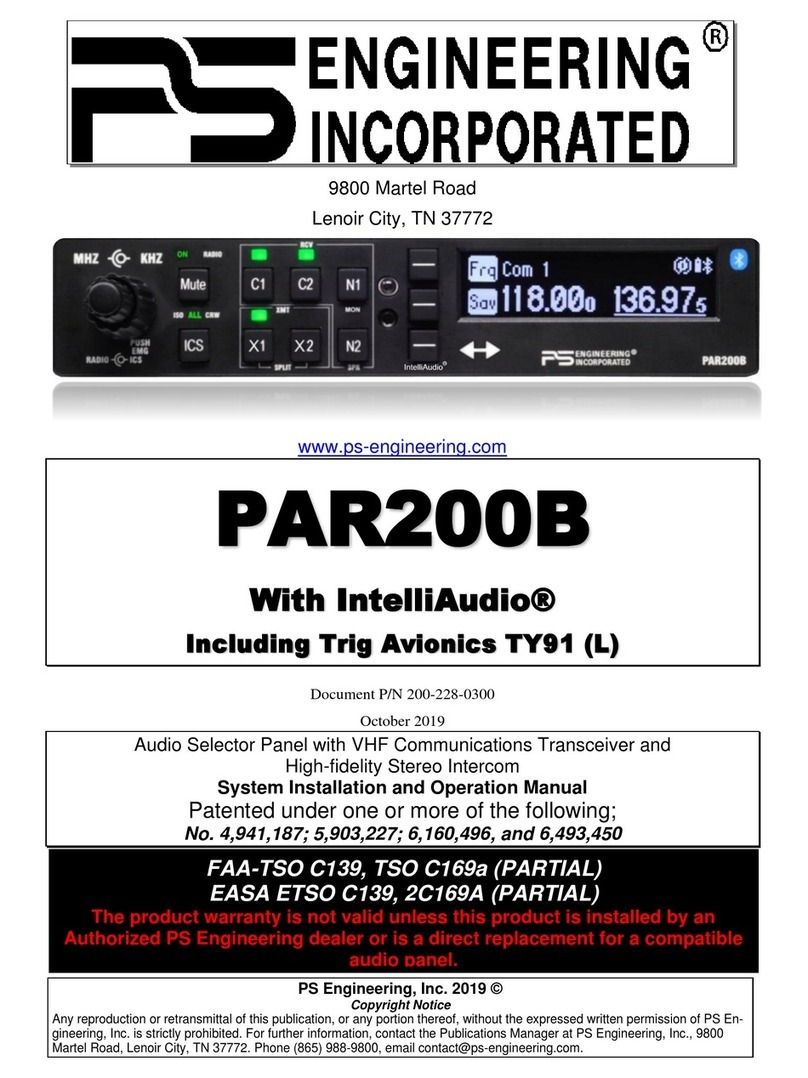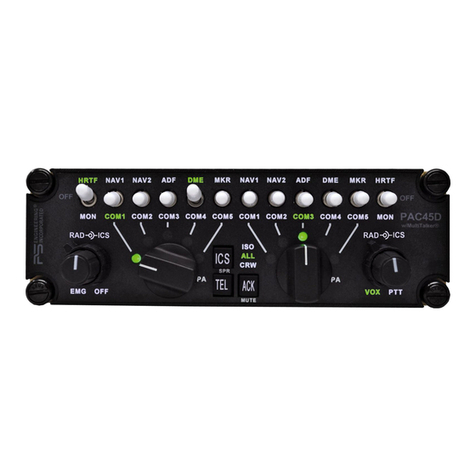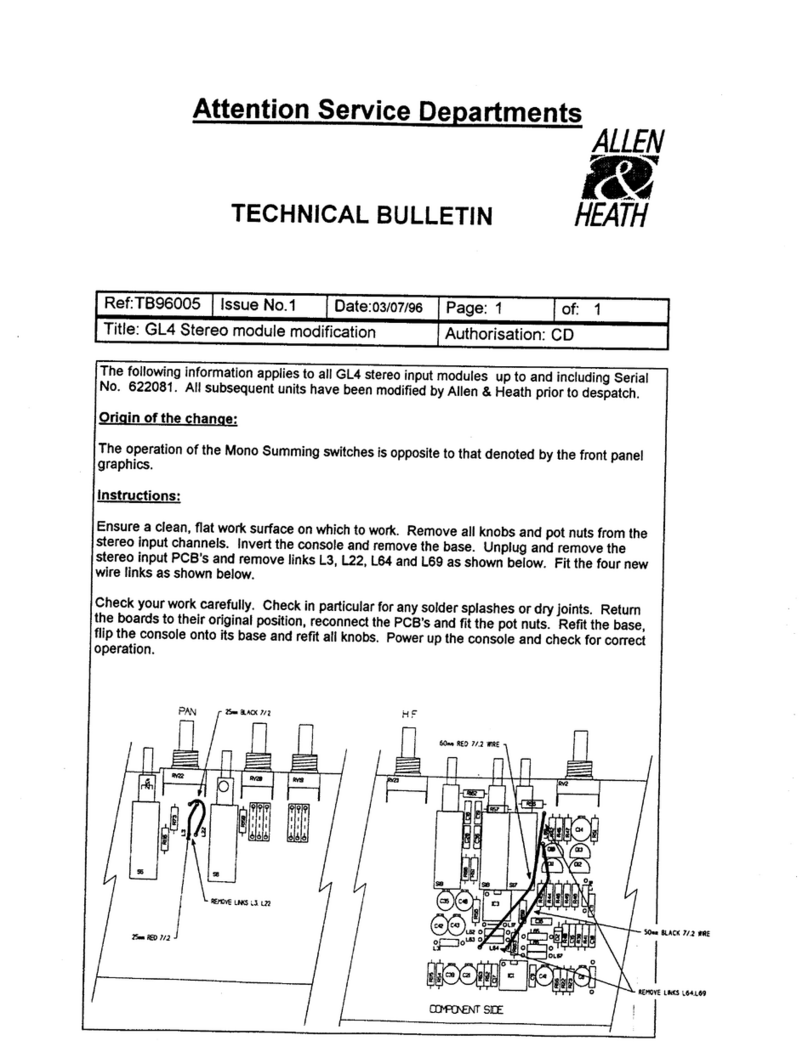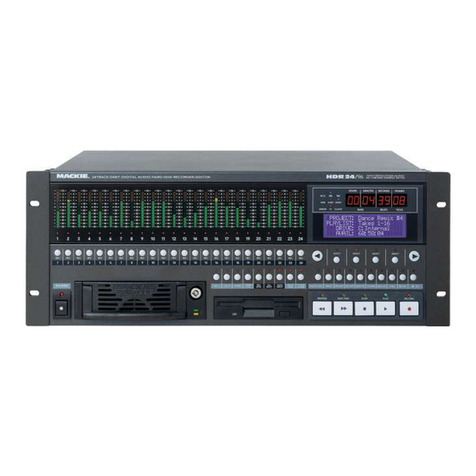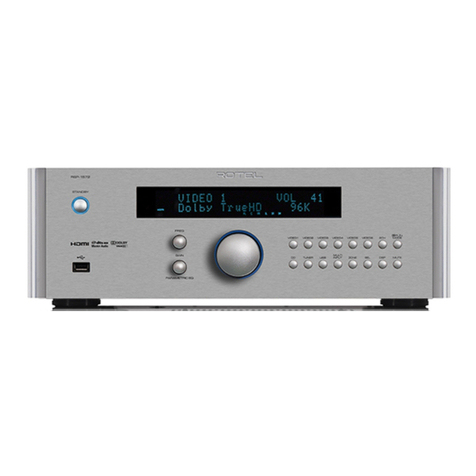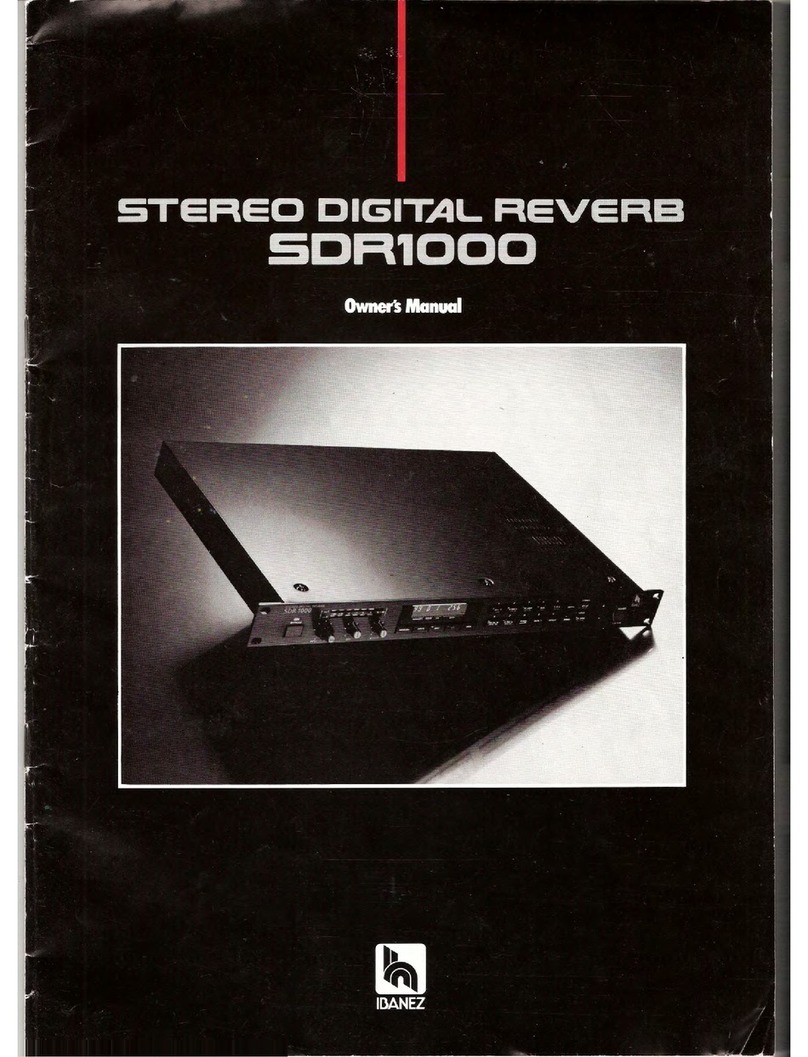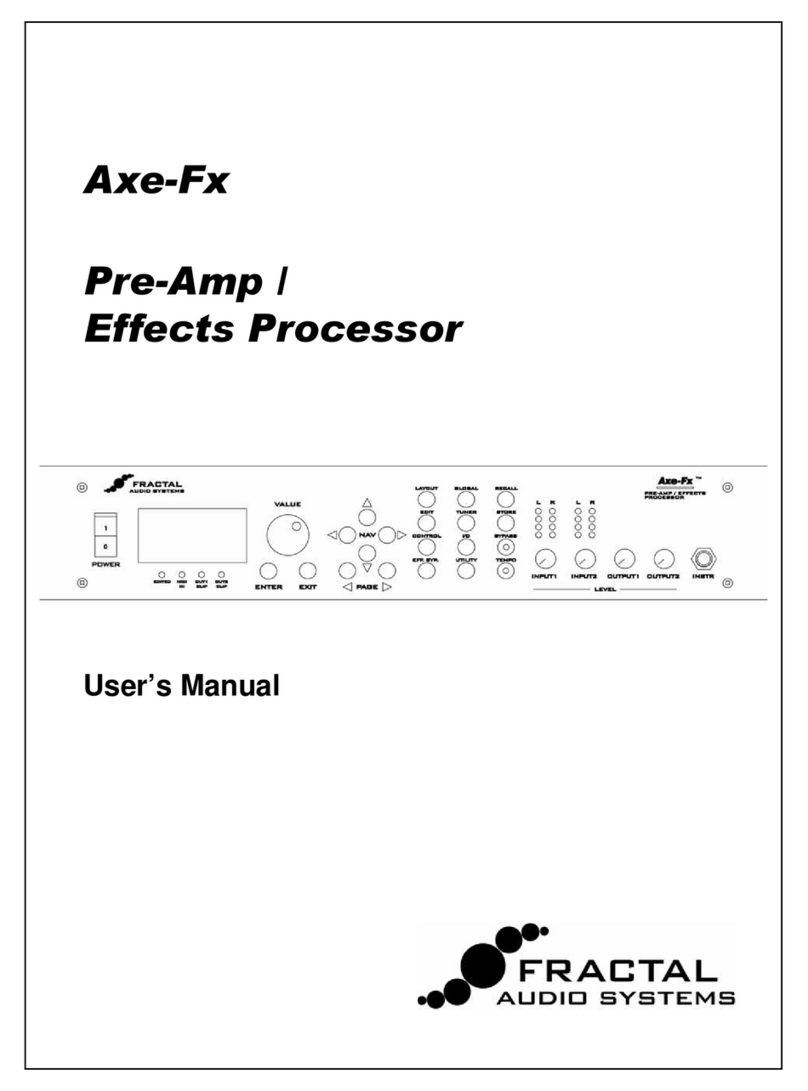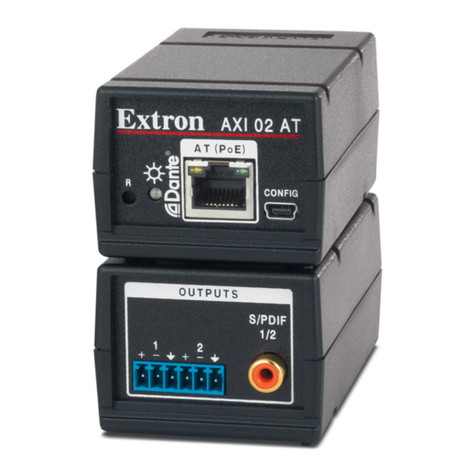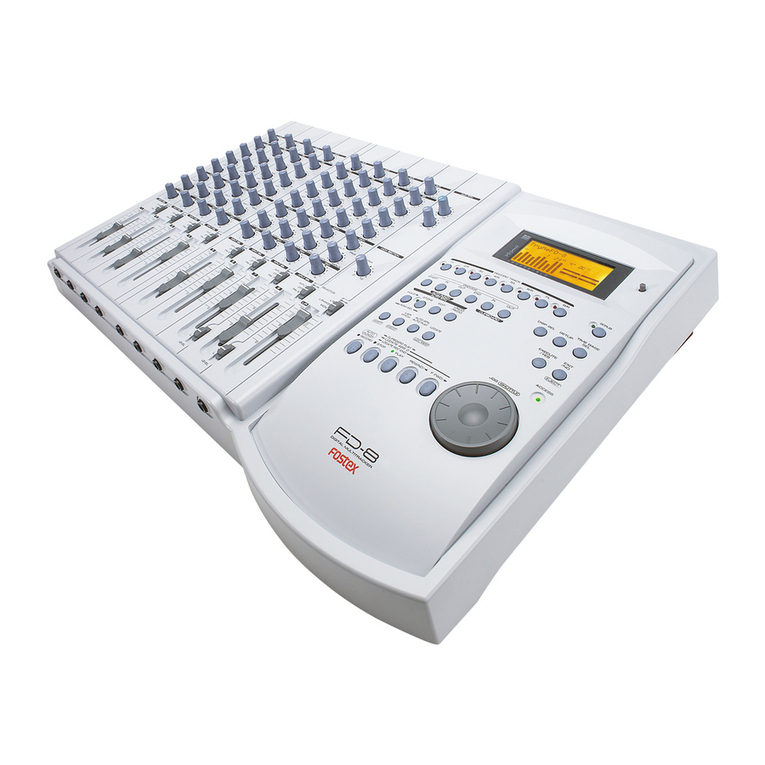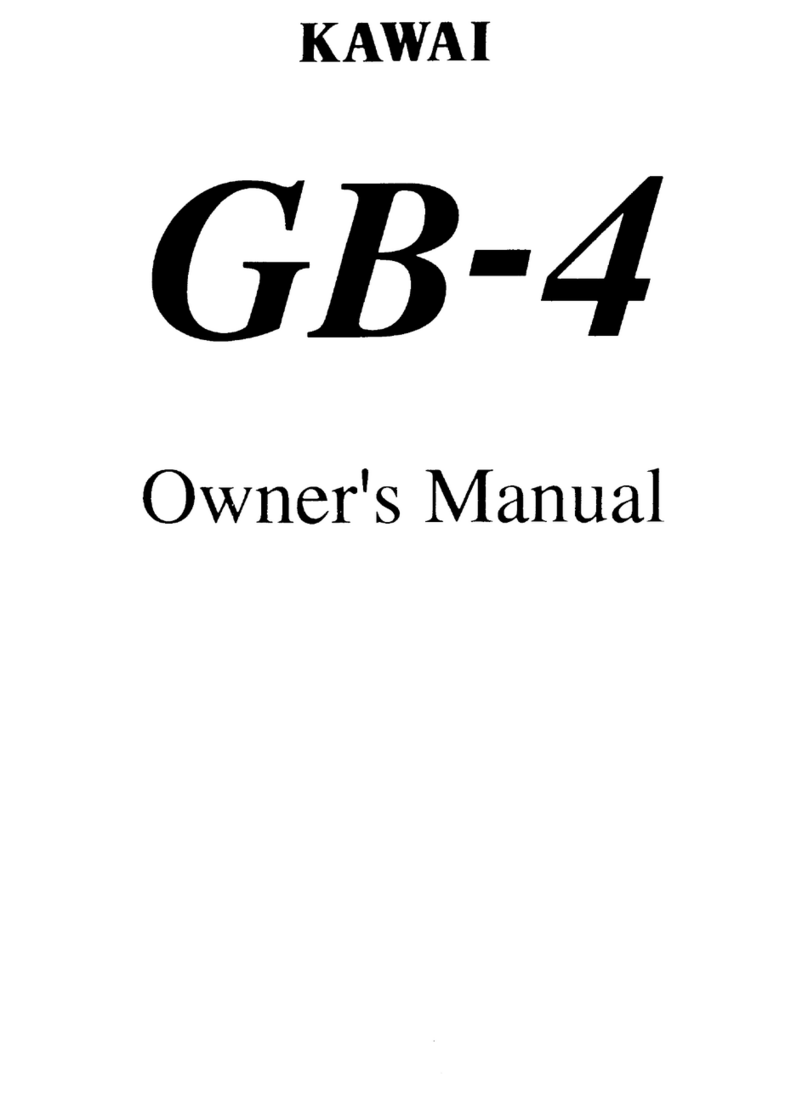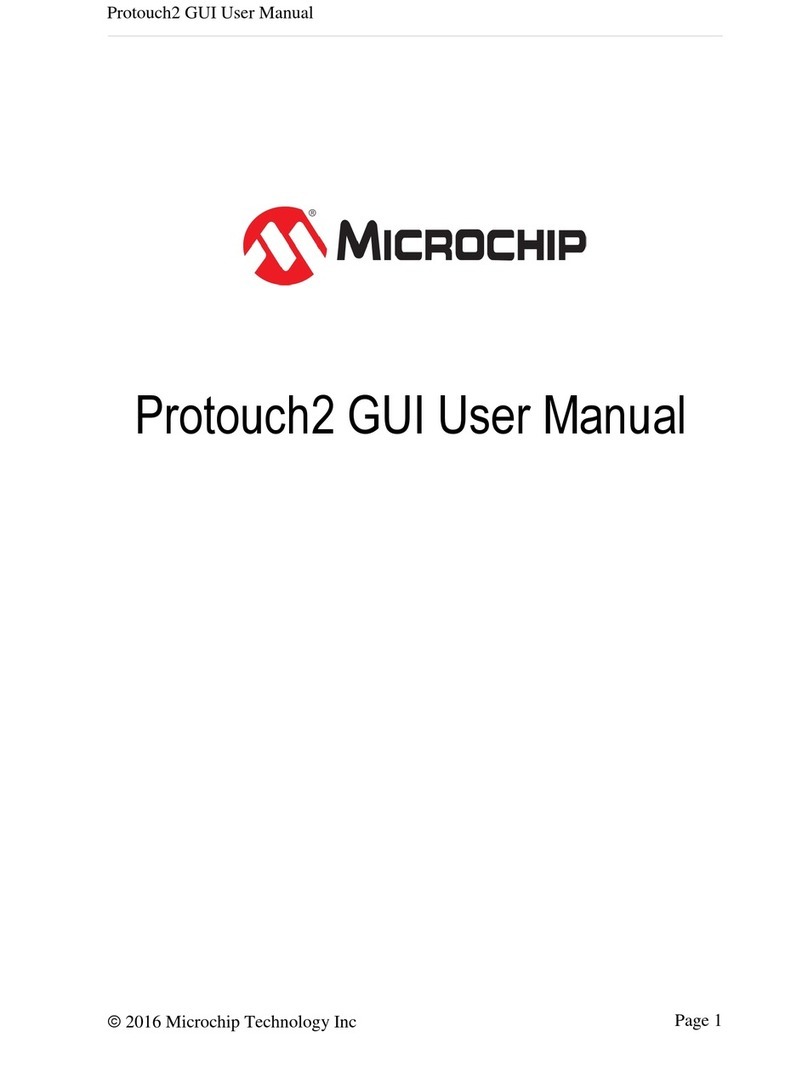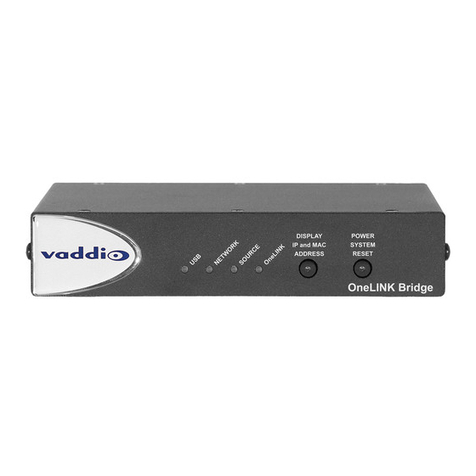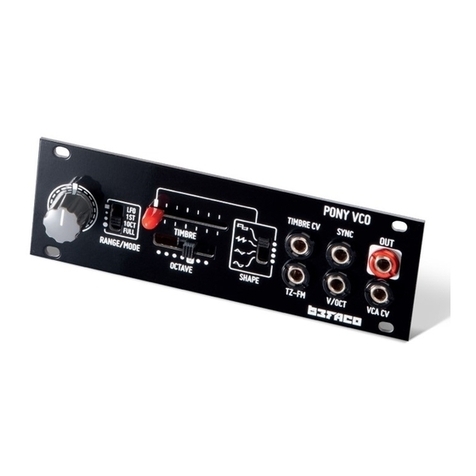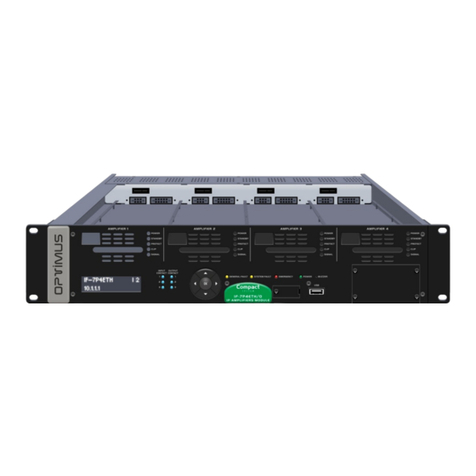PS Engineering PMA8000BTi User manual

202-890-0722 Page 1R2 March. 2016 PMA8000BTi Pilot Guide
Covered under one or more of the following Patent No. 4,941,187, 5,751,817,
5,903,227, 6,160,496, 6,493,450,
FAA-Approved: TSO C50c, C35d
EASA-Approved ETSO C50c, 2C35d
9800 Martel Road
Lenoir City, TN 37772
www.ps-engineering.com
PMA8000BTi
PMA8000BTi
Audio Selector Panel with IntelliAudio®
Marker Beacon Receiver
Stereo Intercom System
with Bluetooth® Connectivity
Flying Never Sounded So Good! ™
Pilot’s Guide
Pilot’s Guide
and
and
Operation Manual
Operation Manual
202-890-1722 Rev 2 March 2016
PS Engineering, Inc. 2016 ©
Copyright Notice
Copyrighted information in this manual is subject to change without notice. PS Engineering reserves the right to
improve or change the products or contents of this manual, without notification of any person or agency. The contents of
this pilot’s guide may be downloaded, stored and reprinted for personal use provided that this copyright information is
included. Commercial use is strictly prohibited. For further information contact the Publications Manager at PS Engi-
neering, Inc., 9800 Martel Road, Lenoir City, TN 37772. Phone (865) 988-9800

Page 2 202-890-0722 PMA8000BTi Pilot Guide
Operation
PMA8000BTi controls
Power Switch (1) (EMG-Fail Safe Operation)
The power switch controls all audio selector panel functions, intercom and
marker beacon receiver.
When the unit is turned off, either by pressing the volume control, or if the
breaker is pulled removing power, the PMA8000BTi is in Fail-Safe mode. In
this mode, the pilot’s headset is connected to COM 1 for transmit and re-
ceive, and connected to unswitched input #1 for priority audio alerts. The fail
safe audio will only be heard in the left ear of a stereo headset.
Communications Transmit (XMT) Selection (2)
To select Com 1 or Com 2 for transmit, press the button on the bottom row,
next to the XMT legend. The bottom and top button indicators light, showing
that you will transmit and receive on the selected radio.
Communications Receive (RCV)
Selection (4)
To listen to the other radio, press the upper but-
ton, in the RCV (receive) section. When a com
is selected for receive, it will stay selected until
manually deselected, even if you select, and then
deselect its transmitter.
Unless the audio panel is in “split” mode, the
PMA8000BTi gives priority to the pilot’s radio Push-To-Talk (PTT).
If the Monitor function is activated (Function B), the audio from this radio
will be muted when the primary radio (selected for transmit) is receiving a
Transmitter selection
Receiver selection

202-890-0722 Page 3R2 March. 2016 PMA8000BTi Pilot Guide
signal.
In TEL mode, the pilot is connected to the cell phone, but still hears the
COM radios selected. The radio PTT will switch the mic to the selected com,
and allow continued aircraft communications to continue.
IntelliAudio® (11)
When IntelliAudio processing is active, the
COM 1 audio will be presented in the 10
o'clock position, and COM 2 will be pre-
sented from the 2 o’clock position. Intelli-
Audio® is toggled on and off by holding the COM 1 and COM 2 RCV push
buttons at the same time, for more than 1 second. When IntelliAudio is on
the Monitor Mode cannot be active.
Audio Selector (4)
These buttons select the switched navigation receivers. The DME input (if
present) is also shared with AUX. In
SPLIT mode, only the pilot will hear
selected navigation audio.
Cockpit Speaker (5)
This switch will place all selected au-
dio on the cockpit speaker when this
switch is selected. In “SPLIT” mode, the speaker carries the same audio as
the pilot.
Depending on installation, important audio alerts such as ra-
dar altimeter or autopilot disconnect will come over the
speaker even if it is not selected, while other unswitched in-
puts, will only be present if the SPR button is selected. Con-
sult your professional avionics installer for these important
configuration details.
Intercom Operation
IntelliVox® VOX-Squelch
IntelliVox® is PS Engineering’s proprietary intercom squelch control.
Through the use of digital processors, each microphone is monitored, and
opens instantly when human speech is detected. This results in seamless con-
versations aboard the airplane for crew and passengers, without syllable clip-
ping or fatigue-inducing noise.
No adjustment of the IntelliVox® squelch control is necessary. There is no
field adjustment. The system is designed to block continuous tones, therefore

Page 4 202-890-0722 PMA8000BTi Pilot Guide
people humming or whistling in monotone may be blocked after a few mo-
ments.
For consistent performance, any headset microphone must be placed within
¼-inch of your lips, preferably against them. (ref: RTCA/DO-214, 1.3.1.1
(a)). It is important to have the microphone element parallel to your mouth,
and not twisted inside the cover.
Note: For optimum microphone performance, we recommend use of a Mi-
crophone Muff Kit from Oregon Aero (1-800-888-6910,
www.oregonaero.com ). This will not only optimize VOX performance, but
will improve the overall clarity of all your communications.
You should also keep the microphone out of a direct wind. Moving your
head through an air stream may cause the IntelliVox® to open momentarily.
This is normal. The IntelliVox® is designed to work with normal aircraft
cabin noise levels (70 dB and above). Therefore, it may not always recognize
speech and clip syllables in a quiet area, such as in the hangar, or without the
engine running. This is also normal.
Intercom Volume Control (7)
The small volume control knob adjusts the loudness of the intercom for the
pilot and copilot. It has no effect on selected radio levels, music input levels
or passengers' volume level.
The larger, outer volume control knob controls intercom volume for the pas-
sengers. It has no effect on radio or music levels.
Mono Headsets in Stereo Installation
The pilot and copilot positions work with mono headsets. However, the In-
telliAudio feature will not function.
If a monaural headset is plugged in to a PMA8000BTi Stereo installation,
one channel will be shorted and all passengers will lose one channel unless
they switch to the “MONO” mode on the headset.
Intercom Modes (8) The intercom has three modes. This button cycles
through the intercom modes, from top to bottom
and then back up. The description of the intercom
mode function is valid only when the unit is not in
the "Split" mode.
ISO:The pilot is isolated from the intercom and is
connected only to the aircraft radio system. He hears the radios (and sidetone
during radio transmissions). The copilot and passengers will hear the music
sources as configured by the audio panel configuration Function keys. See
page 11—Smart Function Keys for more details.
While in ISO Mode, the pilot can elect to hear music #1. First, be sure that

202-890-0722 Page 5R2 March. 2016 PMA8000BTi Pilot Guide
the ISO mode is selected. Then press and hold the TEL button, then hold the
ICS mode button for more than one second. The ICS indicator will blink
slowly to indicate music is present in ISO. The music muting will be the
selected mode.
ALL:All parties will hear the aircraft radio and intercom. Crew will hear
Music 1, passengers can hear Music 1 or 2. The music mutes in accordance
with the muting mode selected.
CRW: (Crew) Pilot and copilot are connected on one intercom channel and
have exclusive access to the aircraft radios. The passengers have their own
intercom. The music that the crew and passengers will hear is determined by
the Smart Function Keys.
In SPLIT mode, the intercom, and the indicator are off for the crew. Press-
ing the Mute button enables the activates the intercom and indicator in the
CRW mode.
Remote Mode switch
If a remote SWAP switch is installed, the intercom mode can be changed by
a long press (more than 1 second) of the swap button.
Marker Beacon Operation (9)
The Marker Beacon Receiver uses visual
and audio indicators to alert you when
the aircraft passes over a Beacon trans-
mitter.
The Blue, Outer Marker lamp has an
associated 400-Hertz 'dash' tone. The lamp and tone
will be keyed at a rate of two tones/flashes per sec-
ond when the aircraft is in the
range of the Outer Marker.
The Amber, Middle Marker
lamp is coupled with a 1300 Hertz tone, keyed alter-
nately with short 'dot' and long 'dash' bursts at 95
combinations per minute.
The White, Inner marker lamp has a 3000 Hertz 'dot' tone, and will be keyed
at a rate of six times per second.
Marker Beacon Receiver audio can be heard by selecting the "MKR" push-
button switch. There is a service adjustment located on the top of the unit to
adjust the volume if desired.
The MKR button located next to the indicator lights is used to set the re-
ceiver sensitivity and to test the indicator lamps mute the marker audio.
Pressing the MKR button for one second will cause the marker audio to
mute. The next beacon received will re-activate the audio.

Page 6 202-890-0722 PMA8000BTi Pilot Guide
Holding the MKR button for one second also activates marker test, labeled
"T/M" and illuminates all three lamps simultaneously to confirm the lamps
(internal and external) are working. Releasing the button returns to the last
sensitivity.
Split Mode
To activate the split mode, push both the
COM 1 and COM 2 XMT (bottom) buttons at
the same time. All four indicators will come
on. In the split mode, the pilot is on COM 1,
while the copilot is on COM 2. In split mode,
the intercom between pilot and copilot is off,
as is the green ICS indicator. Press the MUTE
button to restore intercom to the CREW mode if desired.
Select either of the com XMT buttons to exit the split mode. It is not possi-
ble to have the pilot on Com 2 and copilot on COM 1 in split mode.
NOTE: Due to the nature of VHF communications signals, and the
size constraints in general aviation aircraft, it is probable that there
will be some bleed-over in the Split mode, particularly on adjacent
frequencies. PS Engineering makes no warranty about the suitability
of Split Mode in all aircraft conditions.
Telephone (TEL) (10)
The TEL mode serves as a full duplex interface and distribution for tele-
phone systems such as portable cellular phones with ear-
piece jacks or Bluetooth connectivity. Pressing the button
connects the telephone to the users as follows:
In ALL intercom mode, all crew and passengers will be
heard on the phone when they speak. Com and other se-
lected radio audio is also heard in the headsets. If the
pilot or copilot pushes the radio PTT, their mic will be transferred to the
selected Com radio. The telephone party will not hear ATC communications,
and vice versa.
In CREW mode, only the pilot and copilot are connected to the telephone.
Passengers will not hear the telephone.
In ISO intercom mode, only the pilot will hear the telephone, and only he
will be heard. He will also have access to Com 1 or 2, and will transmit on
that radio using the PTT. Selected radio audio is provided to the pilot.
In cases where the cellular telephone doesn’t provide sidetone, the audio
panel can be configured, by holding the TEL and ADF buttons for more than
one second, to create sidetone for you. (Continued on page 15)

202-890-0722 Page 7R2 March. 2016 PMA8000BTi Pilot Guide
Quick reference PMA8000BTi Operation
This pull-out section covers advanced operation of the PMA8000BTi.
Bluetooth Connection
1. Turn on the PMA8000BTi.
2. From your Bluetooth enabled device, search for other devices,
and select the PMA8000BTi.
3. The PMA8000BTi should pair automatically.
You can now make and receive calls with the audio directed through
the audio panel, and stream music as Music input 1.
The Bluetooth module can be turned off, of desired, by pushing the
AUX and ADF buttons while the unit is being turned on. The module
will reset when unit power is cycled.
Bluetooth® FAQ
1. Some Bluetooth terms to know:
Hands Free —audio panel acts as a hands free telephone hand-
set
A/V Controller —the audio panel has some control over the
music streaming device (see FAQ #7).
Stereo headset —the audio panel will receive music audio
streaming from the PMA8000BTi.
Pairing —is when two Bluetooth devices establish communica-
tion and “agree” to connect. This occurs the first time the devices
“meet” and they will store the information to reconnect easily in
the future.
Discoverable — the PMA8000BTi is always “discoverable.”
That means it will allow any Bluetooth device within range to
detect its presence and attempt to pair. Pairing will only occur
when both devices agree, so you will have to accept the pairing
on your device.
Connection —this occurs when Bluetooth devices that have
been previously paired see each other again and reestablish their
communication. This can happen automatically, or by prompting
the user to accept the connection again. The PMA8000BTi will
always look for paired devices when it is turned on, and connect
with the first one that allows connection.
2. How many devices can I pair with the audio panel?
a. You can pair up to eight devices. After that, the audio panel
will “forget” one device when another is added. Due to the
nature Bluetooth, we can’t predict which device will be

Page 8 202-890-0722 PMA8000BTi Pilot Guide
dropped. If your desired device is dropped, simply re-pair the
one you want.
3. How many devices can I use at the same time?
a. You can connect multiple devices such as a Smartphone and an
iPad for music, but only one telephone can be connected to the
audio panel at a time.
4 Can I use a different music source other than my phone?
a. Yes, you can. However the telephone device, must be paired
and connected first, before the music is paired. In smart
phones such as Motorola Droid, you should specifically disable
the Bluetooth phone or music portion, depending on function to
be used. Some phones must manually select the PMA8000BTi
as an audio source for the phone after the music is connected.
5. My Smartphone didn’t reconnect, what do I do?
A. It is possibly due to corruption of the stored information.
To reset the Bluetooth, turn the unit off. Put the pilot side
headset on. Hold down NAV2 and MKR switches at the same
time, and turn on the audio panel, continuing to hold both
switches for about 5 seconds, or until there is a "ding" sound
in headset. This clears all paired Bluetooth devices.
Apple iPhone users may have to set their Settings,
“Accessibility” selection for “Incoming Calls” and select
“Headset” instead of “Default.”
6 Can I play my laptop movie audio?
a. If your laptop is compatible as Bluetooth A/V source (not all
are), yes. Just add the PMA8000BTi as a Bluetooth device as
you would a stereo speaker device. There are also Bluetooth
devices available (such as the Sony TMR-BT10A Bluetooth
Transmitter Adapter) to plug into the audio output jack that
will enable you to stream music to the audio panel. Note: lap-
top computers with spinning hard drives may fail to work
above 7,500’, due to a loss of air pressure on the disc
mechanism.
7. Can the Bluetooth be played through Music 2?

202-890-0722 Page 9R2 March. 2016 PMA8000BTi Pilot Guide
a. No. However, you can engage Music Function, “Music 1, all
headsets,” which permits passengers to listen to Bluetooth Au-
dio
8. My music quality is very poor, and can only be heard in TEL
mode, what’s wrong?
a. Check your Smartphone, and be sure that it is paired with the
PMA8000BTi as a “speaker” or “wireless speaker” in A2DP
mode.
Split Mode
The Split mode puts the pilot on COM 1, while
the copilot can use COM 2 independently. To
enter the split mode, press both the COM 1 and
COM 2 XMT buttons at the same time. To exit,
press the desired COM 1 or COM 2 XMT but-
ton.
When you activate the Split mode, the intercom is inhibited to avoid
confusion with multiple conversations. The ICS indicator goes off
when Split mode is activated. To reactivate the intercom, press the
Mute button, which places the intercom in CREW mode.
Note: Split Mode does not turn off Nav, ADF, or Aux selected audio
to pilot. However, the copilot will only hear the se-
lected com receiver and unswitched inputs.
Telephone Operation
When the TEL button is active, the cellular tele-
phone is added to the intercom loop, and who is
connected to the phone depends on the intercom mode.
You can answer a call by pushing the TEL button while it is ringing.
Calls can be answered from the telephone handset or the audio panel.
You can disconnect from either the handset or the audio panel. When
a call is disconnected or dropped, the TEL button indicator will extin-
guish after a few moments.
Telephone Pilot Copilot Passengers
ISO
ALL
CRW
On phone
Not connected

Page 10 202-890-0722 PMA8000BTi Pilot Guide
Some cellular telephones provide sidetone (where you hear yourself
speak). If necessary, you can turn off the PMA8000BTi provided side-
tone by holding both the TEL and ADF buttons at the same time, for
more than one second.
Music Muting
Music source #1 (front panel jack and Music 1 input) has four muting
modes, which are announced in the headset as they are activated.
These are: Radio Mute (aircraft radio mutes music), Intercom Mute
(intercom conversation mutes music), Mute on (both radio and inter-
com mutes music), and Mute off (nothing interrupts music). Press the
Mute button to cycle through the modes in sequence.
Music #2 has muting on or off, and is externally controlled.
Music in pilot isolate mode
The pilot can elect to listen to Music 1, even in the Pilot Isolate mode.
While already in the ISO mode, press and hold the ISO button until
the indicator blinks. The ICS indicator will then blink every few sec-
onds to indicate this mode is active. Music muting will follow the
modes listed above. This mode resets with power cycle.
Smart Function Keys (SFK) Configuration
Secondary functions give the PMA8000BTi some special capabilities.
“Intercom” allows the passengers and crew to converse, in ALL in-
tercom mode, without distracting the crew from radio duties. The pas-
senger microphones are cut out from the crew when the radio is ac-
tive, and the passengers never hear aircraft radios. Press and hold the
TEL button until the audio annunciation starts (about 1 second) to
activate the function, and you will hear “Alternate Intercom Func-
tion.” Hold the button again to exit, and you will hear “Standard Inter-
Annunciation LED Intercom Radio
“Mute on” on Muted Muted
“Mute off” off ♫ ♫
“Radio mute” off ♫Muted
“Intercom mute” off Muted ♫

202-890-0722 Page 11R2 March. 2016 PMA8000BTi Pilot Guide
com Function.”
“Monitor” activates a Monitor Mode. In this case, the audio from
the COM radio that is selected for transmit will mute the other COM
audio when it is active. For example, if COM 1 is selected to transmit
to ATC, but COM 2 is receiving weather information; the ATC will
mute the audio from the weather while ATC is transmitting. In Moni-
tor mode, the RCV COM indicator will blink every few seconds as a
status indication. Monitor mode is set to off when the unit is turned
off. This mode resets with power cycle.
Monitor mode cannot be used while the IntelliAudio® spatial func-
tion is active. You will not be able to turn Monitor on, until Intelli-
Audio is turned off.
“Music” controls music distribution, and has three states; Standard
Music Distribution, Alternate Music Distribution and Music 1 All
Headsets.
Music 1 (the Bluetooth device or the Music 1 input on the rear con-
nector) can be distributed to all headsets depending on intercom
mode.
In Standard Music Distribution, Music 1 is provided to the crew, and
Music 2 is independently provided to the passengers.
In Alternate Music Distribution, Music 1 is provided to everybody in
the ALL intercom mode, and Music 2 becomes active, for the passen-
gers only, when the intercom is in the CREW mode. The front panel
Standard Music Distribu-
tion Alternate Music Distribution Music 1 All Headsets
All Crew ISO All Crew ISO All Crew ISO
F r o n t
P a n e l
Jack
Crew Crew Copilot* Crew &
Pass Crew Copilot*
& Pass Crew Crew Copilot*
Music
1 Input Crew Crew Copilot* Crew &
Pass. Crew Copilot*
& Pass. Crew
&
Pass.
Crew
&
Pass.
Copilot*&
Pass.
Music
2 Input Pass. Pass. Pass. Pass.
*Pilot has Music 1 option in ISO mode
“Intercom”
TEL “Monitor”
AUX “Music”
Mute
Alternate Intercom
Mode Monitor Mode Music Distribution
State 1 State 2 State 1 State 2 State 1 State 2 State 3
Alternate
Intercom
Function
Standard
Intercom
Function
Monitor on Monitor off Standard
music
distribution
Alternate
music
distribution”
Music 1 all
headsets

Page 12 202-890-0722 PMA8000BTi Pilot Guide
jack is also available to the passengers in the ISO and ALL intercom
modes.
The PMA8000BTi will announce the Alternate Intercom and Music
distribution functions at unit power up. To defeat the announcement at
power up, hold the TEL and AUX buttons for about two seconds.
The feature can be enabled using the same sequence.
NOTE: SFK are not available in the split mode.
“Smart” Front Panel Jack
When music 1 is actively playing through the rear panel input, the
front jack automatically becomes an advisory audio input, and is NOT
muted by radio or intercom conversations. This is useful for connect-
ing portable traffic or terrain alert de-
vices. If Music 1 is not active, the mute
mode should be selected “Mute Off.”.
Recorder Playback
The internal recorder is always storing
the audio from the radio selected for
transmit. To play back the last incoming
audio, hold the RCV (top) button on the
radio selected to transmit for one second, and release. The playback
will start. Playback stops if the radio becomes active, but the new
incoming message will not be recorded. When the radio stops, press
play and you will be in the same message you had playing.
To hear an earlier message, hold the COM RCV button until playback
stops again, and then press again to begin playing the next earlier
message. Repeat until you hear the message you wanted. Incoming
new messages will stop playback, and you can then restart.
A remote playback switch may also be installed.
Note: when you switch from one transmitter to another, the recordings
are lost.
Blinking indicators
This chart shows you what the blinking LEDs mean.
COM 1 or COM 2 XMT Every 1 second Pilot or copilot is transmitting
COM or COM 2 RCV Every 3 seconds Monitor mode activated
ICS mode Every 3 seconds Pilot has music in ISO
Mute and SPR buttons Every 1 second PA Mode active
What is blinking? How often? What it means

202-890-0722 Page 13R2 March. 2016 PMA8000BTi Pilot Guide
This page intentionally blank

Page 14 202-890-0722 PMA8000BTi Pilot Guide
This page intentionally blank

202-890-0722 Page 15R2 March. 2016 PMA8000BTi Pilot Guide
Warning:
United States FCC Regulations contained in 47 CFR § 22.925 contain prohi-
bition on airborne operation of cellular telephones. “Cellular telephones in-
stalled in or carried aboard airplanes, balloons or any other type of aircraft
must not be operated while such aircraft are airborne (not touching the
ground). When any aircraft leaves the ground, all cellular telephones on
board that aircraft must be turned off.”
Utility Jack
The 2.5 millimeter (3/32”) jack on the front of the PMA8000BTi has three
distinct functions:
Cell phone input (wired)
Advisory audio input
Music input (wired)
Cellular phone
When a cellular telephone is connected to this jack using an adapter cord (PS
Part Number 425-006-7026), the PMA8000BTi audio panel will connect the
intercom to the cell phone when the “TEL” button is pressed (9). When the
TEL mode is off, the telephone ringer audio will be heard if it is present on
the telephone’s output (ringer may be muted by radio and intercom).
Audio Advisory Input
The front jack can be used as a priority advisory input for auxiliary systems
such as a GPS terrain advisory or portable traffic watch system. To prevent
radio or intercom from muting this input, press the “Mute” button.
NOTE:The front jack is no substitute for the certified installation of alerts
such as the GPS waypoint or autopilot tones. These still must be hard wired
into the back by your installer.
“Smart Jack” Function
When the PMA8000BTi has an audio signal on music #1 from the rear con-
nector, the front panel jack automatically becomes a Priority Advisory input,
and is heard in the crew headphones, and this input will NOT be muted by
radio or intercom., if the Music 1 audio is actively playing.
Music Input
When used as a music input, the front panel jack (and Bluetooth) music are
treated as Music #1. Using the Music function button, it can be distributed to
all users, depending on the intercom mode. The volume control (SPR) does
not affect the front panel jack level.
(Continued from page 6)

Page 16 202-890-0722 PMA8000BTi Pilot Guide
Smart Function Keys (SFK)
With voice feedback, the configuration process is self-directed. These func-
tions are non-essential and non-required and as such are only an accessory
capability. Note: annunciations will be stopped by any audio received on the
com radio selected for transmit.
Looking at the front panel you’ll notice that the TEL, AUX, Mute and SPR
buttons have “Function” assignments.
To use these function keys Intercom,Monitor, and Music –press and
hold the desired function key until the audio annunciation of the mode be-
gins. NOTE: SFK are not available in the split mode.
There are three special functions. “Intercom” function is related to the in-
tercom audio distribution, and allows the crew to mute passengers’ intercom
feed when radios are active.
The “Monitor” function mutes the secondary communication radio audio
when the primary radio (the one selected to transmission) is active.
“Music” function controls how music is distributed in your
airplane.
There are two music sources available to the PMA8000BTi, in
addition to the Bluetooth stream. Music 1 input can be either
on the front jack, or the Music 1 input at the rear connector
(Pins 23 and 24, J2). Music 2 is wired into the rear connector,
only (Pins 26 and 27, J2)
The volume of the function selection annunciations and recorder playback
can be adjusted through a hole on the top of the unit marked “ANN VOL.”
“Intercom” Function
Function Intercom controls the distribution of aircraft radio and passenger
intercom. In the “Standard intercom function” mode, aircraft radios are dis-
tributed to all, when the intercom is in the ALL mode. In CREW mode, only
the pilot and copilot positions will hear aircraft radios.
When in “Alternate Intercom Function,” the passengers will NEVER hear
aircraft radios, even in the ALL mode. In addition, when in the ALL inter-
com mode, passengers will be able to converse with the crew, unless the
aircraft radio becomes active, when the intercom audio from the passengers
to the pilot and copilot is stopped, so the crew can focus on the radio. Pas-
sengers will always be able to talk to each other.
To activate this function hold the TEL button until the audio announces
“Alternate Intercom Function,” when activated, and “Standard Intercom
Function” when deactivated.” The alternate intercom mode
is announced at power up, unless the power on announce-
ment has been defeated.

202-890-0722 Page 17R2 March. 2016 PMA8000BTi Pilot Guide
“Monitor” Function
This function turns the Monitor Function on and off.
When the Monitor is on, the audio from the COM that is selected for
reception only (only top LED illuminated) will be muted when the
radio that is selected to transmit becomes active.
This function is useful if you are copying weather from AWOS on
COM 2, but have clearance delivery tuned in on COM 1. With the
monitor active, the AWOS audio will be silenced when clearance
delivery starts to speak.
To activate the Monitor Function press and hold AUX. The audio will announce
“Monitor on,” when activated, and “Monitor off” when deactivated
NOTE: This mode is NOT remembered through power cycles, to prevent inadvertent
blocking of desired audio on the next trip.
“Music” Distribution Function
The Music Function has three modes. To cycle Music distribution modes,
press and hold Mute button until the annunciation starts.
When “Music number one, all headsets” is selected, Music 1 (Bluetooth
source, or rear connector) will be heard in all headsets and is independent of
the intercom mode switch. Therefore, even in the CREW mode, the passen-
gers will hear Music 1, although though they will not hear the crew intercom
or radios.
This mode allows you to use a single in-flight entertainment source. The
music muting follow the selected mode of the crew and passengers.
When you press “Music” function again, you’ll hear, “Alternate music distribution.”
This function makes Music 2 dependent on the intercom mode.
In this state, Music 2 will be heard only when the intercom is in the CREW mode,
and only the passengers will hear it. Music 1 (Bluetooth, Rear input, and Front Panel
Jack) will be provided to passengers’ headset in ISO and ALL inter-
com modes.
Press again, and you will hear “Standard Music Distribution.” In
this mode, Music 2 becomes active, and will always be presented to
the passengers. Music 1 is only available to the pilot and copilot.
The intercom mode switch will not have any affect on the music
distribution.
When the music is in “Standard music distribution,” Music 1 will always go
to the pilot and copilot positions, and is never heard by the passengers. Mu-
sic 2 is always heard by the passengers, and never heard by the pilot and
copilot.
This mode is useful if your passengers have a different interest in entertain-
ment or are watching a DVD, but do not want to be excluded from the inter-
com conversations.
Alternate Music distribution modes are announced at power up, unless the
power on announcement has been defeated.
Power on announcement
If the Intercom or Music Distribution is changed from the factory default,

Page 18 202-890-0722 PMA8000BTi Pilot Guide
the configuration will be played when the unit is powered up. To defeat this
announcement, hold the TEL and AUX buttons for two seconds. The feature
can be enabled using the same sequence.
Music Muting
There are two SoftMute™ muting circuits. The front panel "Mute" button
has four modes, and controls the Mute function for music 1.
The SoftMute™ circuit will cut the music out whenever there is conversation
on the radio, the intercom, or both, depending on the “Mute” mode selected.
When that conversation stops, the music returns to the previous level com-
fortably, over a second or so.
The mute mode functions are controlled through sequential pushes of the
Mute button, and include voice annunciations of the mode selected.
Mute On - music will mute with either intercom or radio - MUTE button
is LED lit. Voice annunciation is "Mute on."
Radio Mute -Radio will mute music, but intercom will not mute music -
MUTE LED is OFF. Annunciation is "Radio mute."
Intercom Mute - Radio will not mute music, intercom will mute music -
MUTE LED is OFF. Annunciation is "Intercom mute."
Mute Off -The “Karaoke” mode - music will not mute except during
radio transmissions.- MUTE button LED is OFF. Annunciation is "Mute
off."
When the PMA8000BTi is turned on, it always begins in “Mute on” mode.
The passengers’ intercom also has a SoftMute™ circuit. If the passengers
hear the radio, or talk on the intercom, the music will mute. If the audio
panel is in CREW mode, then the radio reception will not affect the passen-
ger music.
If the passengers are listening to the music 1 input or front panel input, their
Karaoke Mode is controlled by the front panel “Mute” button. If the passen-
gers are listening to the music 2 input, their Karaoke Mode is activated by an
external switch installed either in the aircraft, or connected to the AUX but-
ton logic output pin on the PMA8000BTi. Consult your installer for details.
Music 1 Volume
The music level is set at the factory at a comfortable level. We
recommend adjusting the entertainment volume at the sources.
However, the Music 1 volume can be adjusted from the front
panel, if desired, by pressing SPR button.
NOTE: Increasing this music level can increase the amount of
aircraft electrical system noise as well.
The Music 1 volume can be adjusted from the front panel, if desired, by
pressing and holding the Music Volume (SPR) key.
The front panel jack is not affected by this control.
Press the Music Volume (SPR)for more than one second, a tone will be

202-890-0722 Page 19R2 March. 2016 PMA8000BTi Pilot Guide
heard indicating the volume level is changing and the music volume will
begin to change. The volume will either increase or decrease, depending on
the last action. To reverse the volume change, release the Music Volume
(SPR) button, and press and hold again, and the volume will change. Con-
tinue to hold until the desired level is reached.
Note: Since it is possible to turn the volume completely off, you may need to
turn the volume up if you don’t hear music when you expected to.
It will take about 12 seconds to go from minimum to maximum volume.
Swap (Switch from Com 1 to Com 2 )
The “swap” button allows you to switch between the COM transmitters
without having to reach up to the audio panel.. This optional switch is usu-
ally mounted on the control yoke or a convenient place by the pilot position.
This switch can also change the intercom mode control, if held for more than
1 second, and released.
Internal Recorder/Playback System
The Intercom Recording System is a continuous loop recorder, (last message
received will be the first heard), the re-
corder has 45 seconds of recording time, or
up to eight messages. There are no buttons
to press to start recording. The system auto-
matically begins to record the instant the
radio selected for transmit becomes active.
Only the pilot and copilot will hear the playback audio.
To play back the last recorded message, you press and hold the COM RCV
pushbutton associated with the selected radio transmitter for about one sec-
ond. You must wait for the message to stop playing before accessing the
prior message. To cancel the playback, press and hold the playback button
for two seconds. The next time the button is pressed for one second, the next
earlier message will be heard. If the radio becomes active while a message is
playing, the message playback will stop. The new audio will not be stored.
Press play to restart the message you were playing.
Messages are lost when a different radio is selected for transmit.
The playback will stop whenever there is more incoming selected com audio,
and the message can be replayed from the beginning. Note: an external play-
back button may also be installed in a convenient location.
Public Address Function (if enabled)
To enter PA mode, press both the Mute and SPR buttons at the same time. The Mute
and SPR LEDs will blink while the audio panel is in PA mode. The copilot can use
the selected com while the pilot will be heard over the speaker. To exit push Mute
and SPR again. This mode is also reset when power is cycled.

Page 20 202-890-0722 PMA8000BTi Pilot Guide
Backlighting
The white text backlighting is controlled by the aircraft dimmer, while the green indi-
cation LEDs are automatically controlled by the light sensor on the PMA8000BTi. If
an aircraft dimmer is not connected, the white backlighting will be at daylight inten-
sity.
Warranty & Service
In order for the factory warranty to be valid, the installations in a certified aircraft must be ac-
complished by an FAA-(or other ICAO agency) certified avionics shop and authorized PS Engi-
neering dealer. If the unit is being installed by a non-certified individual in an experimental
aircraft, a factory-made intercom harness must be used for the warranty to be valid.
PS Engineering, Inc. warrants this product to be free from defect in material and
workmanship for a period of three (3) years from the date of retail sale by authorized
PS Engineering dealer. During the first twelve (12) months of the three-year warranty period,
PS Engineering, Inc., at its option, will send a replacement unit at our expense if the unit should
be determined to be defective after consultation with a factory technician. For the remaining
twenty-four (24) months of the three-year warranty period, PS Engineering will send a no-cost
replacement unit at customer shipping expense.
All transportation charges for returning the defective units are the responsibility of the pur-
chaser. All domestic transportation charges for returning the exchange or repaired unit to the
purchaser will be borne by PS Engineering, Inc. The risk of loss or damage to the product is
borne by the party making the shipment, unless the purchaser requests a specific method of
shipment. In this case, the purchaser assumes the risk of loss.
This warranty is not transferable. Any implied warranties expire at the expiration date of this
warranty. PS Engineering SHALL NOT BE LIABLE FOR INCIDENTAL OR CONSEQUEN-
TIAL DAMAGES. This warranty does not cover a defect that has resulted from improper han-
dling, storage or preservation, or unreasonable use or maintenance as determined by us. This
warranty is void if there is any attempt to dissemble this product without factory authorization.
This warranty gives you specific legal rights, and you may also have other rights, which may
vary from state to state. Some states do not allow the exclusion of limitation of incidental or
consequential damages, so the above limitation or exclusions may not apply to you.
All items repaired or replaced under this warranty are warranted for the remainder of the origi-
nal warranty period. PS Engineering, Inc. reserves the rights to make modifications or improve-
ments to the product without obligation to perform like modifications or improvements to previ-
ously manufactured products.
Factory Service
The units are covered by a three-year limited warranty. See warranty information. Call PS Engi-
neering, Inc. at (865) 988-9800 before you return any unit. This will allow the service technician
to provide any other suggestions for identifying the problem and recommend possible solutions.
After discussing the problem with the technician and you obtain a Return Authorization Num-
ber, ship product to:
PS Engineering, Inc. Attn: Service Department
9800 Martel Rd.
Lenoir City, TN 37772
(865) 988-9800 FAX (865) 988-6619 Email: contact@ps-engineering.com
Units that arrive without an RMA number, or telephone number for a responsi-
ble contact, will be returned un-repaired. PS Engineering is not responsible for
items sent via US Mail.
Other manuals for PMA8000BTi
1
Table of contents
Other PS Engineering Recording Equipment manuals

PS Engineering
PS Engineering PAC45L User manual

PS Engineering
PS Engineering PMA8000B--MP3 User manual
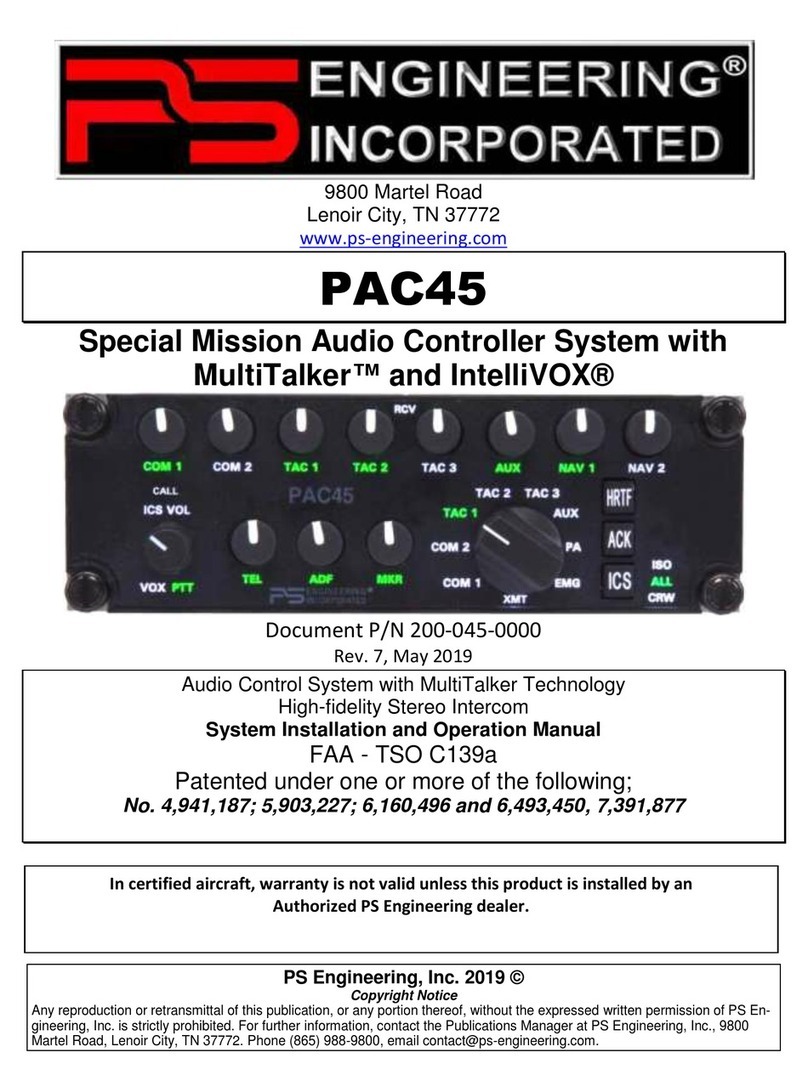
PS Engineering
PS Engineering PAC45 System With MultiTalker User guide
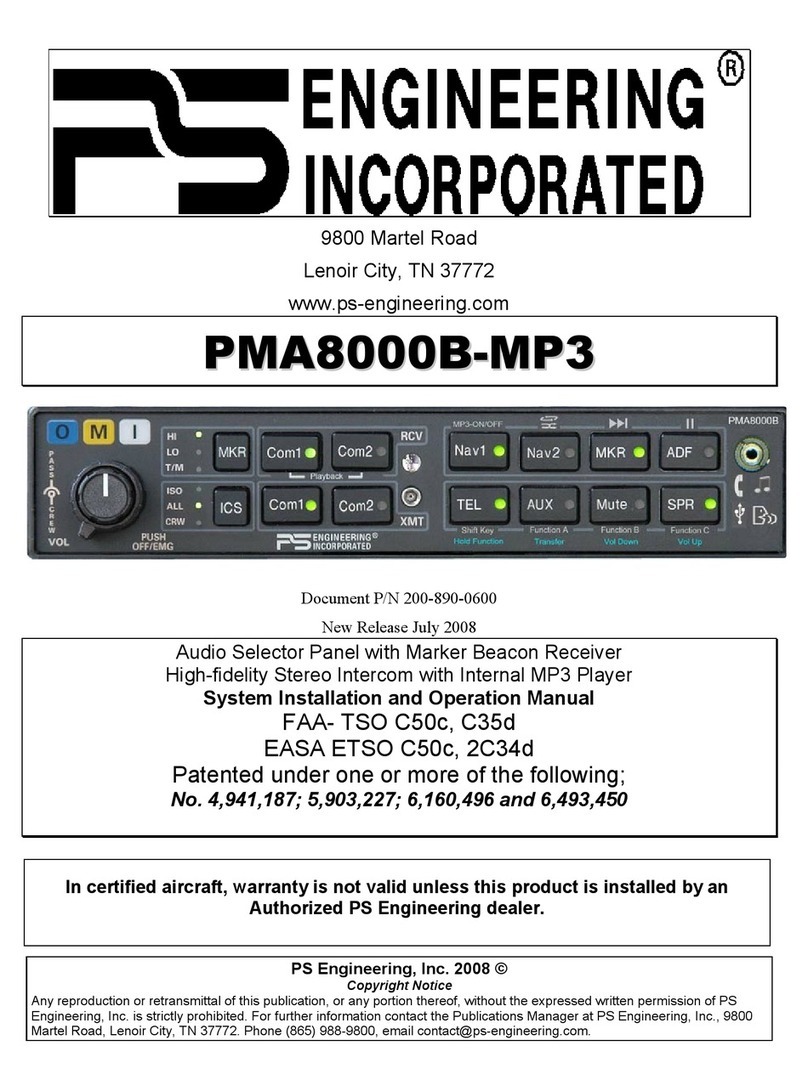
PS Engineering
PS Engineering PMA8000B--MP3 User manual
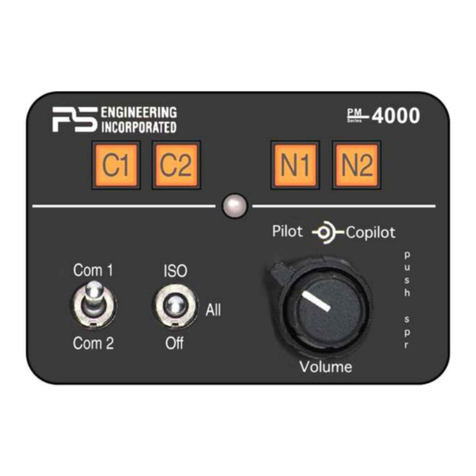
PS Engineering
PS Engineering PMA4000 TSO User manual

PS Engineering
PS Engineering PM1200 Manual
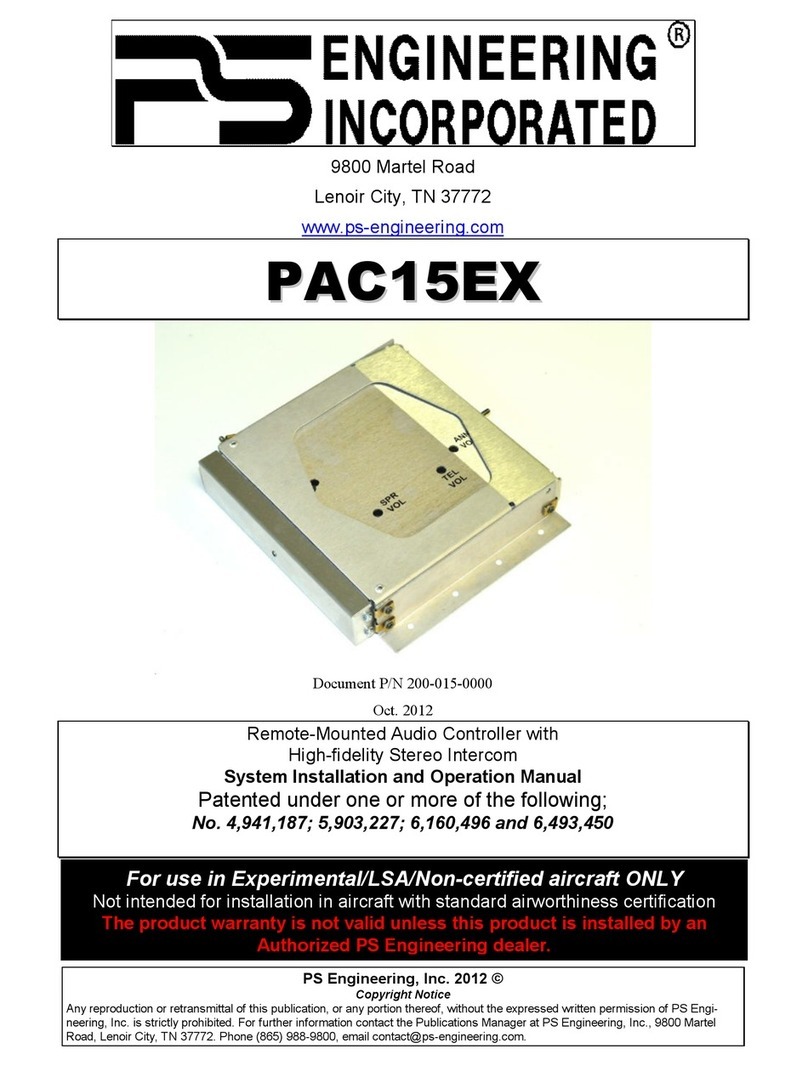
PS Engineering
PS Engineering PAC15EX User guide
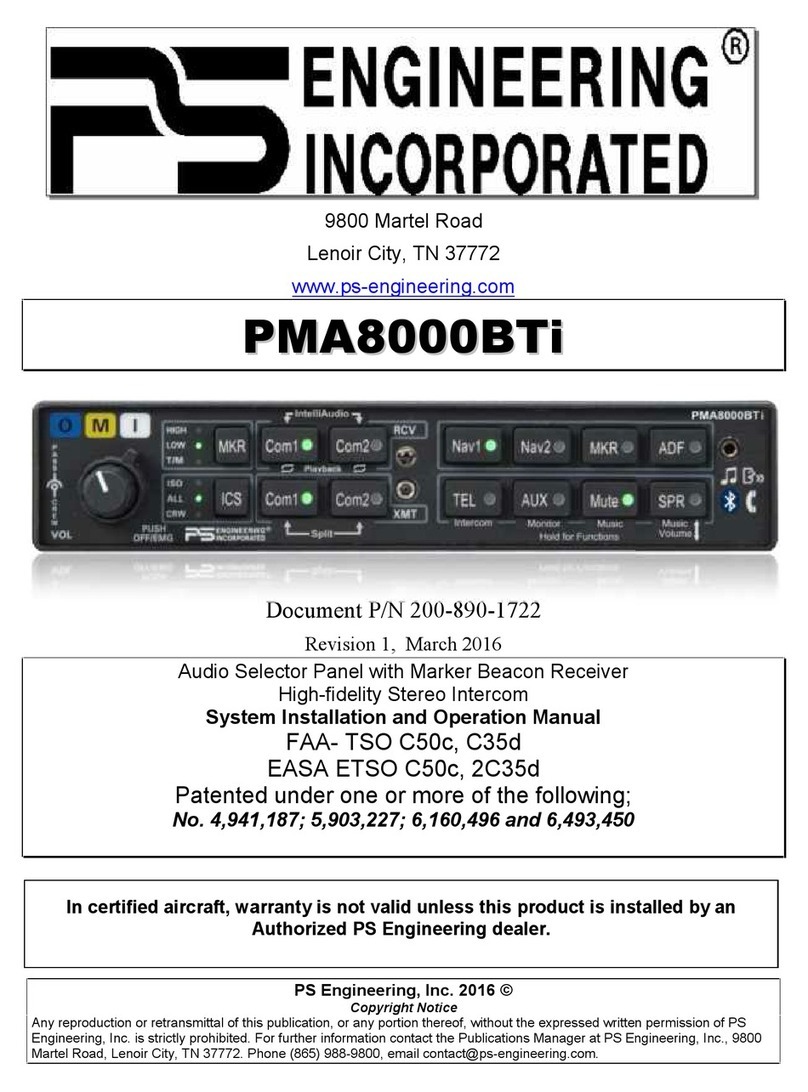
PS Engineering
PS Engineering PMA8000BTi User manual
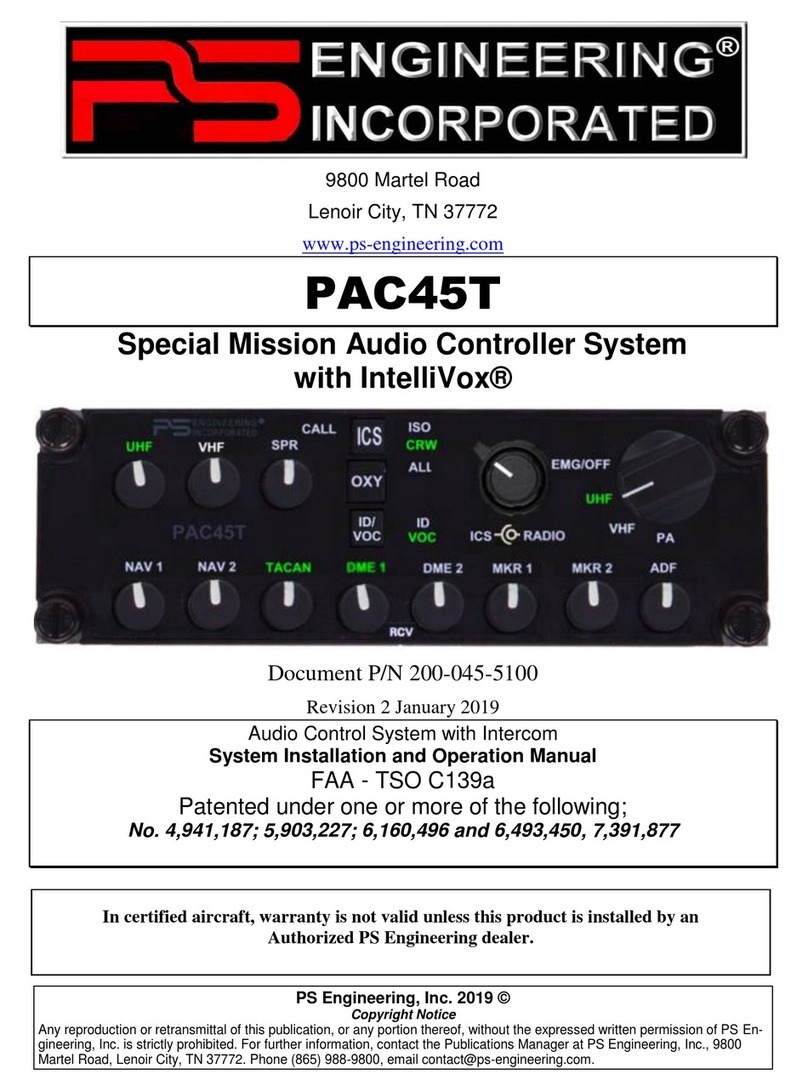
PS Engineering
PS Engineering PAC45T User guide
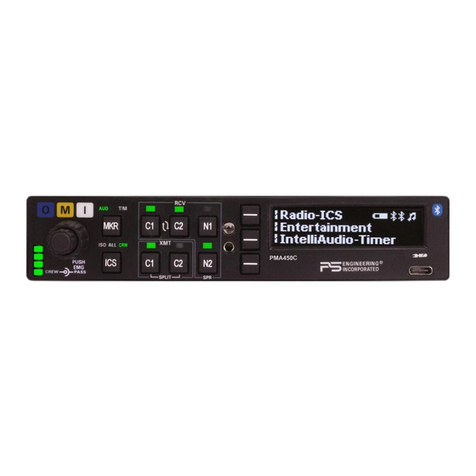
PS Engineering
PS Engineering PMA450C User manual
